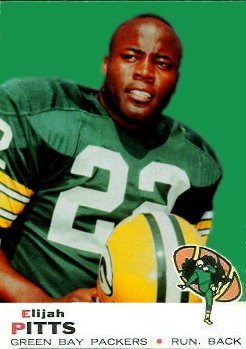Fred Carr, one of my favorites from when I was growing up, died at the age of 71 a week ago. Fred was the fifth overall pick in the 1968 draft, and personnel chief Pat Peppler raved about him, “Carr is phenomenal. The guy is 6’5” 238 pounds, but he can run the 40-yard dash in 4.6 seconds.” Coach Phil Bengtson tried Fred at defensive end and tight end before settling him at weakside linebacker, replacing Lee Roy Caffey.
Carr was an awesome combination of speed and brute force. His tackling was compared to that of Dick Butkus, and he had a penchant for making big athletic plays, such as the six kicks he blocked in 1976. In 1975, he told the Milwaukee Journal, “I get my biggest satisfaction out of lining up over my opponent and punishing him every opportunity I get. I like to get a quick jump, to show him early that I’m the better man. Then, when it gets late in the game, I’ve already defeated my man. As he’s weakening, I’m getting stronger.”
Carr drew All-Pro notice five times, went to three Pro Bowls and even was named Pro Bowl lineman of the game in 1970. Fred credited Ray Nitschke and Dave Robinson for mentoring his play after he moved into the starting lineup on the weak side in 1970. He had great speed and ranged from sideline to sideline in making tackles. In 1974, the free-spirited Carr found a kindred soul when Ted Hendricks joined the Packers, and the two formed a tight bond on and off the field in the one season Hendricks played in Green Bay.
Cliff Christl told my favorite story about Carr in the Journal Sentinel. In 1977, during grass drills and sprints, third round draft pick, Rick Scribner, threw up on the field. Carr stood over the rookie screaming, “Look at me! I smoke three packs of cigarettes a day. I drink whiskey all day. And here’s this 21-year-old rookie barfin’ peas.” Fred was a piece of work but an all-around great linebacker. Unfortunately, when the Packers wouldn’t agree to remove a cyst from his knee in the 1978 preseason, Fred refused to play and was waived. He filed a grievance, and, after an undisclosed settlement, Carr signed with the Chargers in 1979, but failed to make the team.
(Adapted from Green Bay Gold)
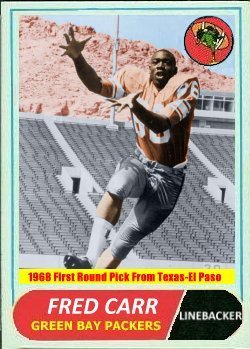
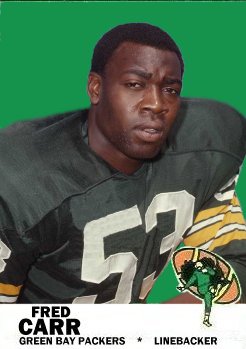
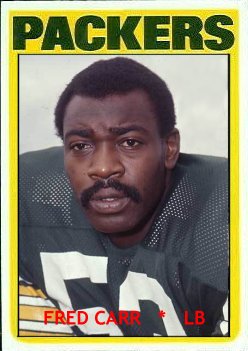
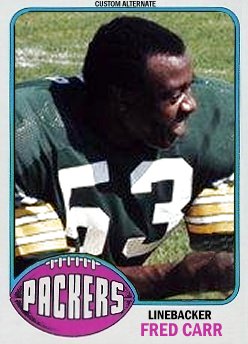
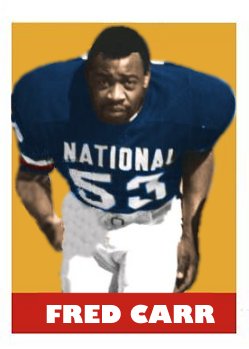
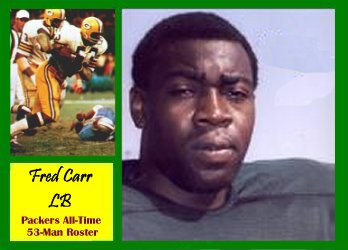
First custom card is colorized.




























